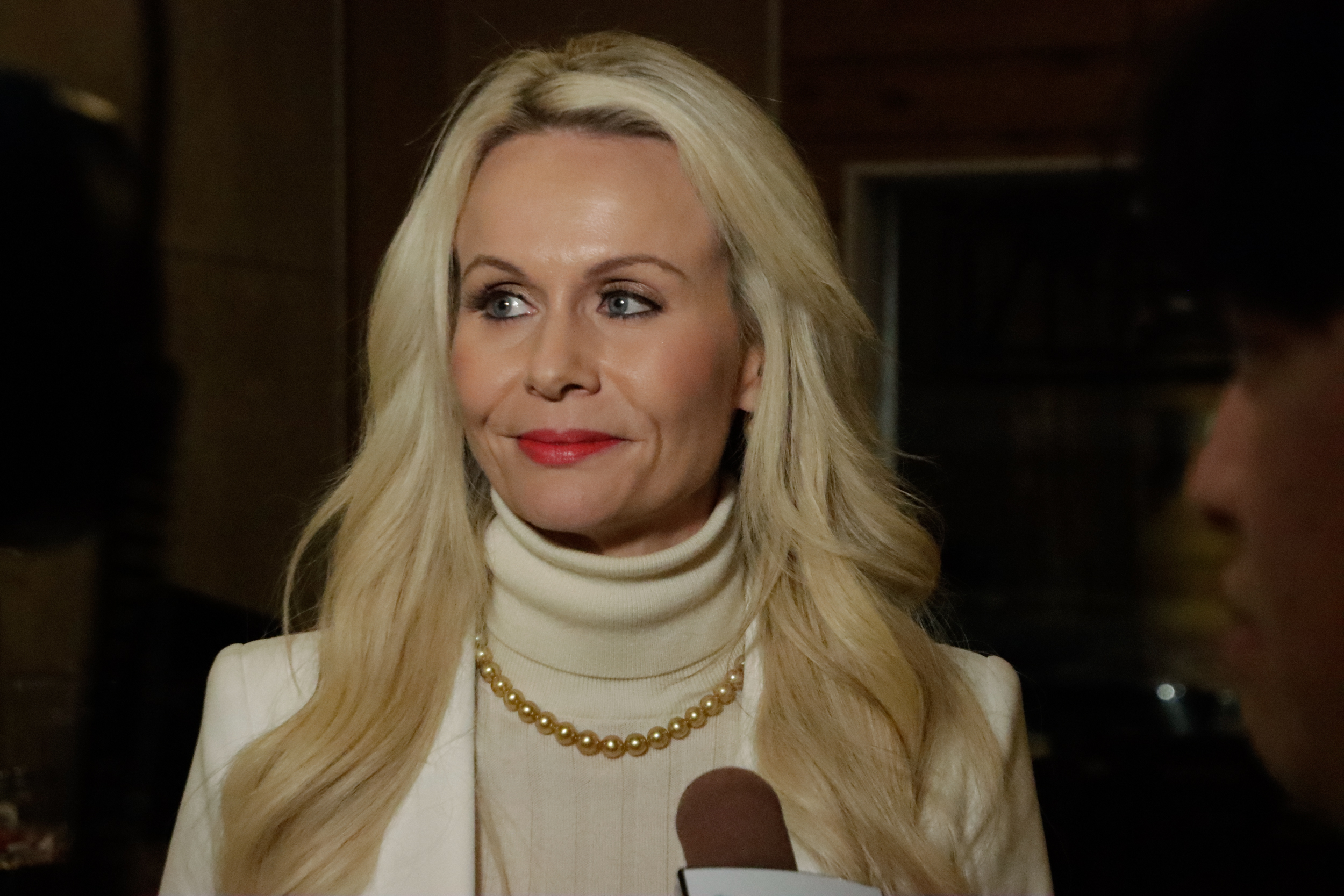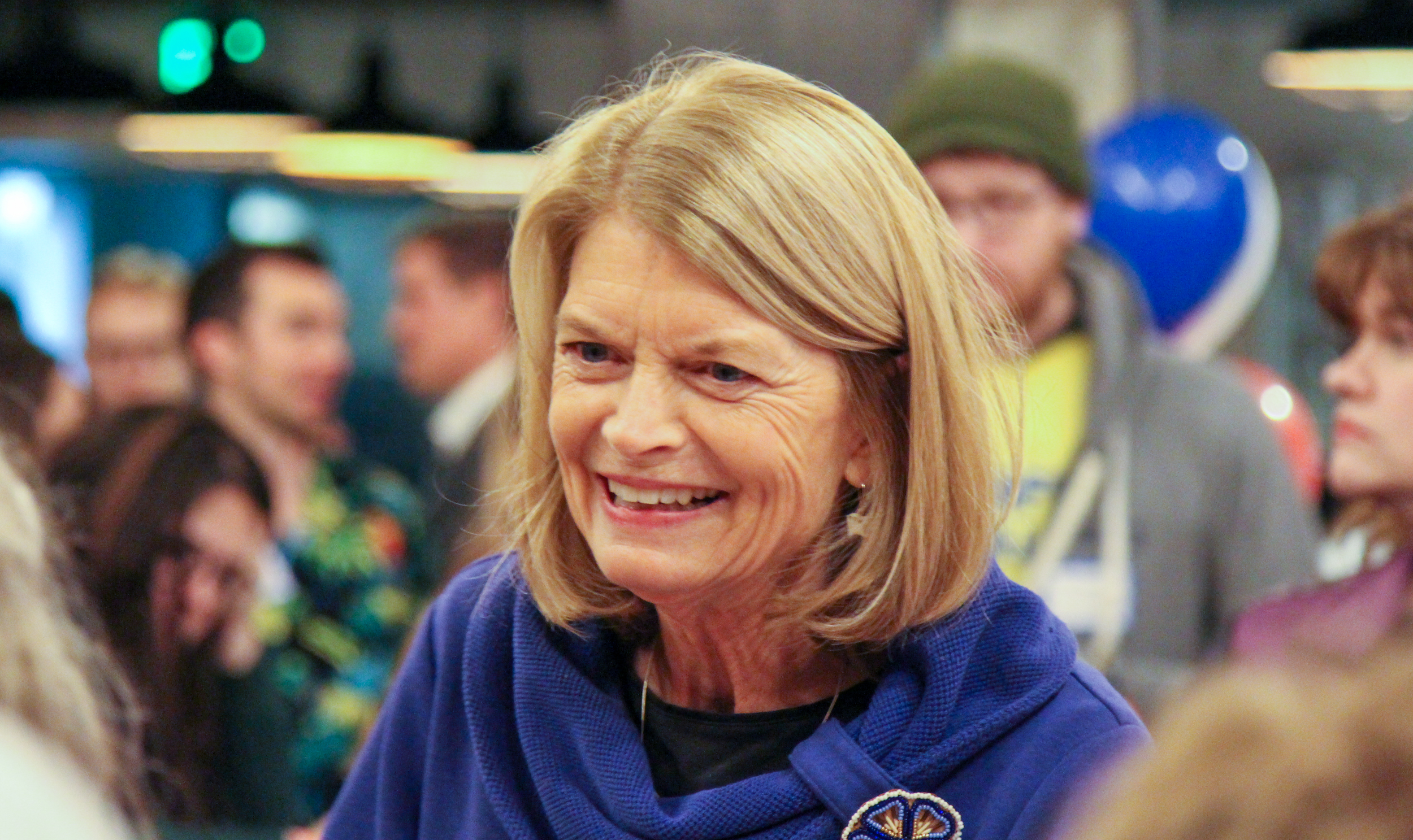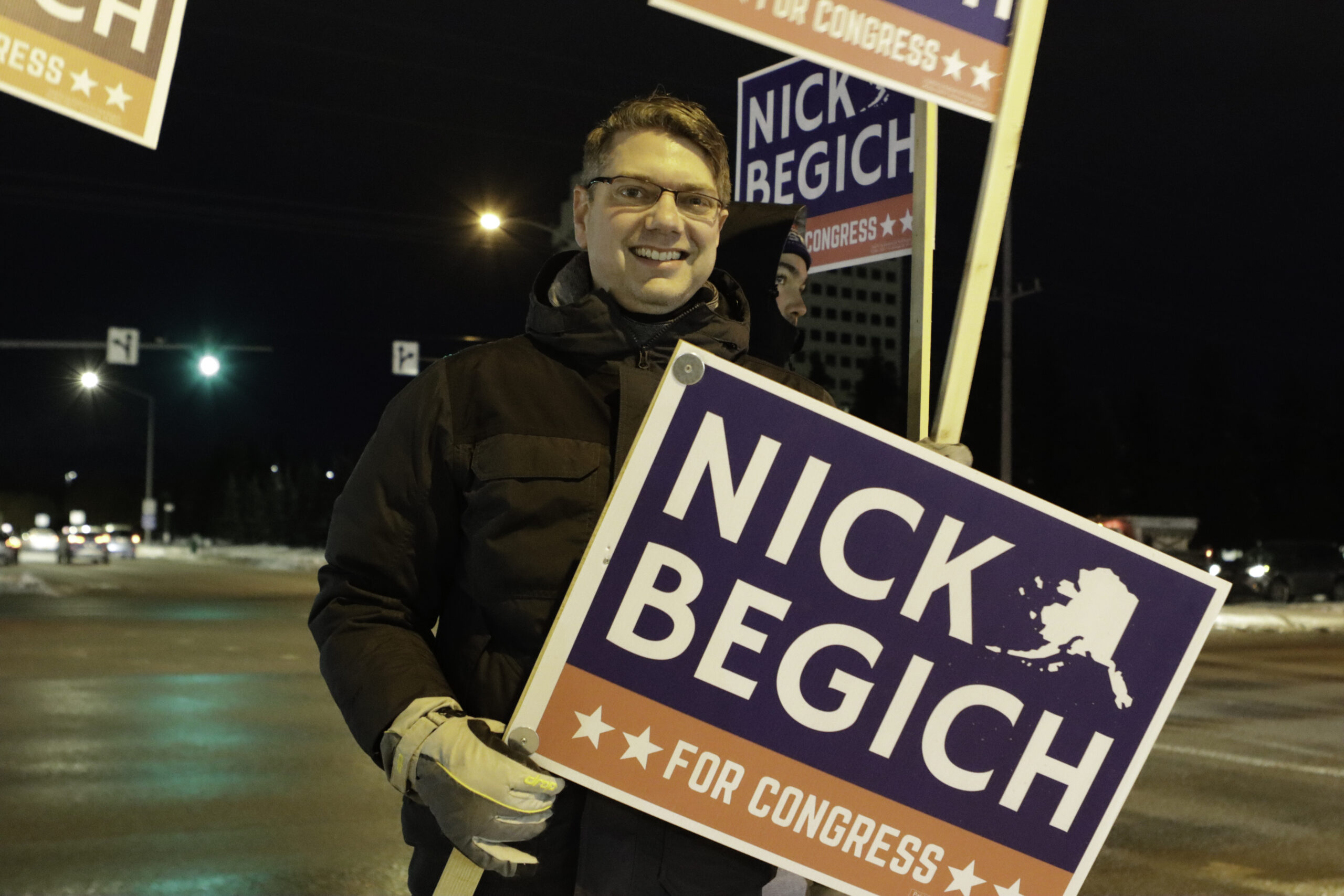
Election results show incumbent Republican Lisa Murkowski narrowly trailing right-wing challenger Kelly Tshibaka in Alaska’s U.S. Senate election, while Democrat Mary Peltola is far ahead of her Republican rivals in the U.S. House race.
The outcome of both Alaska congressional races won’t be certain until second- and third-choice rankings are applied on Nov. 23.
With about 218,000 votes counted by Thursday morning, two days after Election Day, Peltola had 47% of the vote in the election for Alaska’s lone U.S. House seat. Sarah Palin was in second place with nearly 27% and Nick Begich III was third with about 24%.
Technically, Palin could still win, but only if the vast majority of Begich voters took the “rank the red” message to heart and chose the former governor as their second choice. In the special election in August, only about half of Begich voters marked Palin as a their second. Nearly 29% of Begich voters made Peltola their second choice
In the U.S. Senate race, Tshibaka had a lead of less than 2 percentage points, with just over 44% of the vote to Murkowski’s nearly 43%. Democrat Pat Chesbro was far behind but still picked up nearly 10% of the vote. That bodes well for Murkowski: A large percentage of Chesbro voters likely chose Murkowski as their second choice.
At Murkowski’s election night party in downtown Anchorage on Tuesday, political consultant Jim Lottsfeldt, who ran independent expenditure groups supporting Murkowski, said he expected as many as 80% of Chesbro’s first-choice voters to have ranked Murkowski second.
“In the best of all worlds, (Murkowski) would be be ahead right now, but she’s not,” Lottsfeldt said. “But when you project ranked choice voting, she’s going to win. It’s pretty easy math. It would just be more fun for everyone in this room if she had a lead.”
Tshibaka said she was feeling hopeful and confident Tuesday night as election results were released in batches.
“But it’s way too early to take this as any indication of anything, so we’re still going to have to wait out the night,” Tshibaka said. “I know a lot of Alaskans I talked to were confused and upset about the process, but I think that we did enough voter education that we got good voter turnout. At least that’s what I’m hopeful for.”
Murkowski gave a hopeful speech to her supporters. But between chants of “LI-SA, LI-SA, LI-SA,” some of her supporters quietly admitted they were nervous.

Murkowski has held the seat since 2002 and rebounded from a primary loss in 2010 with the first successful write-in campaign for U.S. Senate in more than 50 years. She told her fans not to worry.
“As we’re looking to the lay of the land and what is still out there to be counted, we feel very strongly about how they’re going to move and where they’re going to move us to,” Murkowski said.
Related: Here are the latest vote tallies in Alaska’s general election
The Division of Elections is only counting first-place votes this week. On Nov. 23, once all the mailed ballots are in, the division will eliminate the third- and fourth-place finishers and reallocate those ballots according to their voters’ rankings.
The U.S. Senate race is a contest between Murkowski, who is one of the most moderate Republican senators, and Tshibaka, who has the endorsements of former President Donald Trump and the state Republican party.
Murkowski told reporters on Election Day she’s still content to be a Republican, despite the current direction of the party. She said she remains rooted in the values that drew her to the GOP when she first registered to vote at 18 – a strong national defense, smaller government and personal liberty.
“I’m looking at some of what we have seen in this state and around the country, and I’ve seen that others have kind of strayed from those values that I feel pretty squarely anchored with,” she said at her campaign headquarters on Tuesday. “It’s them.”

A political action committee linked to Senate Minority Leader Mitch McConnell poured millions of dollars into helping Murkowski win re-election. Tshibaka said it showed Murkowski was a tool of the “D.C. establishment.”
Tshibaka voted Tuesday morning at a South Anchorage school. She said she “ranked the red” – except in her own race, because, she said, there’s no other Republican to rank.
“Lisa Murkowski’s been censured by the Alaska Republican Party and she’s been removed from membership,” Tshibaka said. “She’s out there actively campaigning for Nancy Pelosi to keep the leadership in the House. So that’s not a red candidate in Alaska. That’s a blue candidate.”

Murkowski has not been campaigning for Nancy Pelosi. Tshibaka was referring to the senator’s endorsement of Mary Peltola.
Peltola, the incumbent in the U.S. House race, was at a bustling election party Tuesday night in downtown Anchorage, where she told reporters she would also be waiting for the final results in two weeks, despite the early lead.
“So it’s like being an Alaskan traveler,” Peltola said. “You go to the airport, knowing full well it could be a five-hour delay before you actually are wheels up.”

This is the first November in five decades that Don Young isn’t on the ballot. The longtime congressman died in March. It was an earthquake in Alaska’s political scene. Forty-eight people filed to run in the special election to fill the remainder of his term.
Peltola won the special general election in August and was sworn in the next month, making history as the first Alaska Native elected to Congress. For much of her time in office, she’s had to focus on running for re-election.
The campaign was marked by animosity between the two Republicans. Begich went after Palin early with ads reminding Alaskans that Palin resigned as governor in 2009, before her term was up. After Peltola won the special, Begich repeatedly called on Palin to drop out so that a Republican could have the seat.

It clearly got under Palin’s skin.
“He keeps calling me a quitter,” Palin told reporters in September. “And now he wants me, the one who is clearly the only true conservative in this race who can win, he wants me to quit! Now that’s the real joke.”
Palin ran a campaign that relied extensively on her celebrity. She rarely granted interviews to Alaska reporters and seldom provided a schedule of campaign events. She was spotted late Tuesday afternoon at one of the traditional sign-waving corners in Anchorage: the Seward Highway and Northern Lights Boulevard. She said she came to understand the strategy of “rank the red,” as a way to put a Republican in the U.S. House.
“As much as so many of us – you know, we love Mary Peltola. She’s adorable. She’s great. She’s a friend of mine,” Palin said. “But what she represents – the planks in the platform that actually harm Alaska – we can’t afford more votes going that direction.”

Begich was waving signs at the other end of the block Tuesday. He said Alaska’s new election system made it a strategic imperative to campaign against Palin.
“They call it ranked choice voting, but it’s really instant runoff voting, and you’re kind of running a primary and a general simultaneously,” he said. Attacking Palin’s record, he said, was his primary election objective.
“Now, my opponent on the left side of the aisle, Mary Peltola, has no one to her left. And so she doesn’t have the same challenges that I do on the right side of the aisle,” he said. “So it makes it a little different for her than it does for the rest of us.”
For the Senate election, the fourth place candidate Republican Buzz Kelley looks likely to be eliminated first, followed by Chesbro, the Democrat.
In the House race, Libertarian candidate Chris Bye finished fourth and will be the first candidate eliminated.
If the current order holds, Begich will be the next candidate eliminated.
Regardless of the outcome of Tuesday’s election, Peltola will keep the seat until Jan. 3, when the next congressional term starts.
Editor’s note: This story has been as more results were tallied.
RELATED STORIES:




